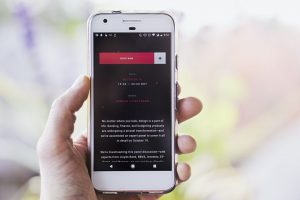-
Module 1: Digital Education: The Myths and Facts
7-
Video Overview of Module 1Module1.1
-
Learning ObjectivesModule1.2
-
Map Your Digital Day ActivityModule1.3
-
How digital tools support the typical characteristics of adult learnersModule1.4
-
ACTIVITY- Download Discover’s “Typical characteristics of Adult learners” and see which traits apply most to YOUR students!Module1.5
-
ACTIVITY- Download Quiz and use Kahoot to turn it into an interactive quiz for your participants!Module1.6
-
Lesson Activity Part 1- Group Research Exercise Using Diigo!Module1.7
-
-
Module 2: Digital Inclusion: How the Design and Use of Digital Technology Can Promote Equality in Education
7-
Video overview of Module 2Module2.1
-
Learning ObjectivesModule2.2
-
What is digital inclusion, why is it important?Module2.3
-
How can we promote digital inclusion?Module2.4
-
ACTIVITY: Download Digital Inclusion Case Study GuideModule2.5
-
TRUST- Overcoming the phycological barriers of the digital worldModule2.6
-
MOTIVATION-Supporting Adult learners driven by a specific purpose!Module2.7
-
-
Module 3: Innovative teaching...resources and practices that enhance learning and teaching!
9-
Video Overview of Module 3Module3.1
-
Module 3’s downloadable learning objectivesModule3.2
-
Why do we need Innovative teaching methods?Module3.3
-
The role of the educatorModule3.4
-
The flipped classroom teaching method!Module3.5
-
Problem based learning as an innovative teaching method!Module3.6
-
Jigsaw technique as an innovative teaching method!Module3.7
-
Inquiry based learning as an innovative teaching method!Module3.8
-
ACTIVITY: Download DISCOVER’s learner feedback worksheet!Module3.9
-
-
Module 4: Mobile Learning
8-
Video Summary of Module 4Module4.1
-
Module 4’s Downloadable learning objectivesModule4.2
-
Introduction to Mobile learningModule4.3
-
ACTIVITY: Quick QUIZ 8 questionsQuiz4.1
-
What are the challenges of Mobile learning?Module4.4
-
The use of Podcasts within Mobile LearningModule4.5
-
Digital Tools and Apps that support mobile learning!Module4.6
-
Activity: Tiktok your next topic!Module4.7
-
-
Module 5: Games and learning
7-
Video summary of Module 5Module5.1
-
Module 5’s Downloadable learning objectivesModule5.2
-
Introduction to Game based learningModule5.3
-
The Advantages and disadvantages of game-based learningModule5.4
-
Game based learning in practice- how to get started!Module5.5
-
Examples of Adult learning games!Module5.6
-
Lesson Activity Part 2 – Group Presentation Activity using PowtoonModule5.7
-
-
Module 6: Learning Spaces AND Collaborative virtual environments
6-
Video summary of Module 6Module6.1
-
Module 6 Downloadable learning objectivesModule6.2
-
What is collaborative learning?Module6.3
-
What are the benefits of collaborative learning?Module6.4
-
The different types of collaborative learners and the skills involvedModule6.5
-
Tools for virtual collaboration!Module6.6
-
Introduction to Mobile learning
Mobile learning (m-learning) is gaining popularity as the “anytime, anywhere‟ online learning channel. M-learning can take place through the use of applications such as mobile phones, smart phones, tablets and portable multimedia players.
Recent years have seen significant growth in the use of mobile devices. Around 76% of people in Europe own a smart phone and access to the internet through it. When educating takes place mainly online, it’s worth making as many of the materials and activities mobile-friendly, so learners that would like a break from their computer screen can use their phones or tablets instead.

The Advantages of Mobile learning!
The Millennial generation has grown up with digital devices. So Mobile learning is tailored to the way millennials work and think. But there are so many advantages with M-learning that adult learners can benefit from too, especially to suit their busy lifestyles. Let’s take a look at some of the advantages of M-learning.
Learn whenever and wherever you want
M-learning enables learners to take their learning materials with them. Your learners don’t have to be at a specific place to learn. Their learning content is available for them in their pockets. Waiting a time such as waiting for a plane or flight can be used for more productive tasks like learning something new. Come on! It’s even possible to take an online course or complete a survey while lying in bed!

More motivation
Learners can feel more motivated to learn something new or to take online training if they know they can take their learning materials everywhere with them. That is especially the case if they don’t have time to learn during their regular work hours.

Mobile learning facilitates and speeds up feedback
Mobile Learning facilitates (and speeds up) any feedback you may want to receive from your learners. Since it’s much easier for your learners to access the content you are sharing, you can expect higher completion rates for your training courses and faster results and statistics from your online tests!

Long distance is not a problem
Given the current time where the pandemic has made reaching learners remotely vital, as well as learners that are always on the go and need easy access to content. Bite sized reading material, videos and quizzes can easily be completed by just a few clicks.

Examples of Mobile learning in adult education
Sharing learning content for mobile consumption
This is the most common way of using mobile learning. After creating your learning material (mostly using a desktop), you can share it with your learners so they can learn using their mobile devices, in their own time. It’s easy to share the material through email or by simply sharing the link by text message, for example. This method of mobile learning is more about individual consumption.
Interaction during lessons
It’s also possible to use mobile devices for a blended learning approach. Educators can ask questions during an in-person training and the audience can answer them via a survey that they take on their smartphones. For that, the trainer can share a link to the survey, invite participants by email, or even create a QR code that can be easily captured with a smartphone camera. It’s possible to get immediate feedback, which is especially effective when training large groups.
ACTIVITY-WATCH this YouTube video from John Traxler’s to gain insight and overview of the future of mLearning!
When it comes to digital learning teachers no longer have control over what device their students are learning with. They bring their own device, their smartphone and their tablet computer. And this is a nothing but a revolution in higher education and other education sectors, says John Traxler of Wolverhampton University, one of the pioneers of mobile learning. So how do teachers and universities cope with that new situation?
